Völuspá – Norse Prophecy Of The Völva, A Feared Shaman By The Vikings
Ellen Lloyd - AncientPages.com - The Völuspá, the first poem in the Codex Regius of the Poetic Edda, is one of the most outstanding literary achievements in the Norse world.
This fascinating poem reveals Norse prophecies told by a Völva, a mighty female shaman and seer in Norse mythology.
God Odin meets the Völva - Credit: Illustration by Carl Emil Doepler, 1905
Norse Prophecies Revealed
At the poem's beginning, the Völva is dead and must be restored to life. God Odin orders the Völva to rise from the grave. She tells God Odin what awaits him, the other gods, humanity, and all living beings.
The Völva describes the world's creation, the catastrophic visions of the final battle with the giants, and the inevitable destruction of the world, known as Ragnarok. She also tells what humans and gods can expect after Doomsday.
The poem begins with the Völva demanding silence from the Sons of Heimdallr.
"For silence, I pray all sacred children,
great and small, sons of Heimdall.
they will that I Valfather's deeds recount,
men's ancient saws, those that I best remember."
In Norse mythology, God Heimdallr possessed extraordinary powers and was a guardian of Bifrost (Bifröst), the rainbow bridge in Asgard, the realm of the mighty Norse gods.
This part of the poem has various scholarly interpretations. Who were the sacred children? Some suggest that the holy children who should be silent are humans, but other Norse mythology experts think the Völva addresses the other gods surrounding Odin.
God Thor's battle against Midgard Serpent. Credit: Illustration by Carl Emil Doepler, 1905
During the session with the Völva, Odin learns about the world's creation and why Yggdrasil, the Norse Tree of Life, is sacred.
She explains the existence of the mysterious Nine Worlds and reveals the identity of all beings who live in those realms.
In the Völuspá, we also find the story of the Jotuns, Norse giants, and all mythological creatures and the battle between the Aesir and Vanir gods.
Odin learns how he will be killed by the frightening Fenrir that delivers chaos and destruction in Ragnarok's final battle.
The Völva says that a new world will emerge from the destruction of the old world. The righteous and trustworthy will survive Ragnarok and live in the golden city of Gimle that stands within Vidblain, a place above Asgard, at the top of the World Tree, Yggdrasil.
At the end of the session, God Odin offers the Völva his necklace and rings as payment for telling him about the future.
The Importance Of A Völva In The Norse Society
The Völva was considered a Seiðr (sometimes anglicized as seidhr, seidh, seidr, seithr, seith, or seid), an Old Norse term for a type of sorcery that was practiced in Norse society during the Late Scandinavian Iron Age.
A Völva was respected, and Vikings and the Norse gods feared her prophecies. It has long been believed that a Völva was only a fictional figure that appeared in Norse mythology, but archaeological finds confirm the existence of these people in reality.
"Odin and the Völva" (1895) by Lorenz Frølich. Image source - Wikipedia
As previously reported on Ancient Pages, while excavating near the Fyrkat Viking fortress in Denmark, archaeologists found about 30 Viking Age graves, but one was more unusual.
Scientists found a woman dressed in fine blue and red clothes inside the tomb adorned with gold thread. Her clothes showed she was a prominent figure and most likely held royal status. It would be easy to say this was "only" a rich Viking woman, but some objects inside the grave suggest she was a Norse shaman.
We may never know the woman's identity, but her burial goods show she was not a Viking warrior but rather a Völva.
Völuspá And Christianity - Striking Similarities
Codex Regius of the Poetic Edda contains 31 poems by an unknown scribe. Its exact age is unknown, but it was probably written down toward the end of the thirteenth century, around 1280. However, some poems may have been composed at the beginning of the thirteenth century. This precious work is now preserved in Iceland.
Although Völuspá originates from pagan traditions, there is no doubt that Christian ideas also influenced its shaping.
The relations of an underground place of punishment where criminals and the wicked will be sent, the coming of a new kingdom after Ragnarok, and the existence of a paradise reflect Christian beliefs.
Scholars think the Pagan author of Völuspá had knowledge of Christianity and infused it in his poem.
The mythological poems commonly included in published versions of the Poetic Edda are:
- Voluspa (Prophecy of the Seeress)
- Havamal (The Words of the High One)
- Vafthrudnismal (The Words of Vafthrudnir)
- Grimnismal (The Lay of Grimnir)
Völuspá, the Prophecy of the Seeress (sometimes called Sibyl's Prophecy), is undoubtedly one of the essential sources for studying Norse mythology.
Written by Ellen Lloyd – AncientPages.com
Updated on January 7, 2024
Copyright © AncientPages.com All rights reserved. This material may not be published, broadcast, rewritten or redistributed in whole or part without the express written permission of AncientPages.com
More From Ancient Pages
-
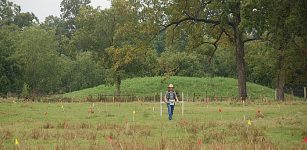 Remains at Crenshaw Site Are Local, Ancestors Of Caddo – New Study
Archaeology | Jun 15, 2023
Remains at Crenshaw Site Are Local, Ancestors Of Caddo – New Study
Archaeology | Jun 15, 2023 -
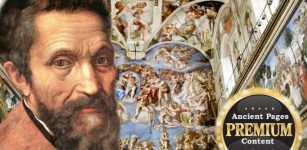 The Sistine Chapel Cypher – Secret Messages In The Art Of Michelangelo
Ancient Mysteries | Mar 3, 2018
The Sistine Chapel Cypher – Secret Messages In The Art Of Michelangelo
Ancient Mysteries | Mar 3, 2018 -
 Peopling the Americas: Not “Out of Japan” – Popular Theory Debunked
Archaeology | Oct 13, 2021
Peopling the Americas: Not “Out of Japan” – Popular Theory Debunked
Archaeology | Oct 13, 2021 -
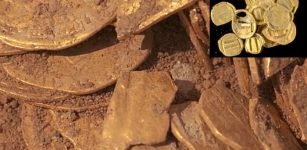 Rare Trove Of 1,100-Year-Old Gold Coins Found By Teenagers In Central Israel
Archaeology | Aug 29, 2020
Rare Trove Of 1,100-Year-Old Gold Coins Found By Teenagers In Central Israel
Archaeology | Aug 29, 2020 -
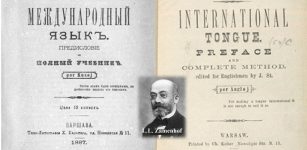 On This Day In History: Unua Libro ‘First Book’ Describing Esperanto Published – On July 26, 1887
News | Jul 26, 2016
On This Day In History: Unua Libro ‘First Book’ Describing Esperanto Published – On July 26, 1887
News | Jul 26, 2016 -
 Unexplained Behavior In People Found After Being Lost In National Parks – Strange Encounters With Dangerous Humanoids And The Little People
Featured Stories | Oct 27, 2024
Unexplained Behavior In People Found After Being Lost In National Parks – Strange Encounters With Dangerous Humanoids And The Little People
Featured Stories | Oct 27, 2024 -
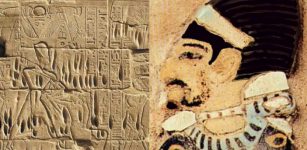 Mysterious Shasu – Bandit Canaanites Or Israelites?
Civilizations | Jan 14, 2019
Mysterious Shasu – Bandit Canaanites Or Israelites?
Civilizations | Jan 14, 2019 -
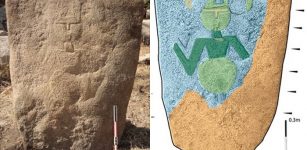 Unique Balchiria Stelae Engraved With A Goat-Like Figure Found On Corsica Is A Puzzle
Featured Stories | Feb 3, 2020
Unique Balchiria Stelae Engraved With A Goat-Like Figure Found On Corsica Is A Puzzle
Featured Stories | Feb 3, 2020 -
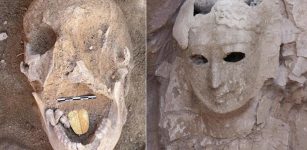 Ancient Egyptian Mummies With Golden Tongues Discovered In Alexandria
Archaeology | Feb 3, 2021
Ancient Egyptian Mummies With Golden Tongues Discovered In Alexandria
Archaeology | Feb 3, 2021 -
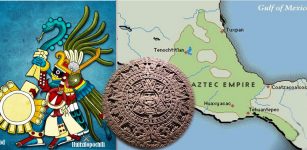 Why The Aztecs Called Themselves ‘Mexica’
Ancient History Facts | Jan 13, 2018
Why The Aztecs Called Themselves ‘Mexica’
Ancient History Facts | Jan 13, 2018 -
 On This Day In History: The Battle Of Actium Took Place On Sep 2, 31 BC
News | Sep 2, 2016
On This Day In History: The Battle Of Actium Took Place On Sep 2, 31 BC
News | Sep 2, 2016 -
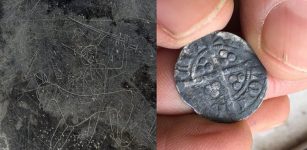 Rare Viking Graffiti And Artifacts Found In Dublin – Depiction Of God Odin Riding Sleipnir Followed By Huginn And Muninn?
Archaeology | Mar 31, 2018
Rare Viking Graffiti And Artifacts Found In Dublin – Depiction Of God Odin Riding Sleipnir Followed By Huginn And Muninn?
Archaeology | Mar 31, 2018 -
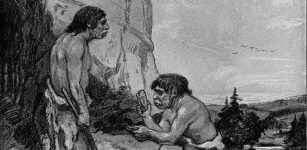 Unraveling The Mystery Of How Our Ancestors Created The First Spoken Words
Archaeology | Dec 6, 2021
Unraveling The Mystery Of How Our Ancestors Created The First Spoken Words
Archaeology | Dec 6, 2021 -
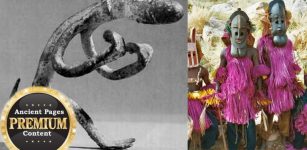 Did The Dogon Tribe Have Knowledge Of Theoretical Physics 5,000 Years Ago?
Ancient Mysteries | Aug 2, 2017
Did The Dogon Tribe Have Knowledge Of Theoretical Physics 5,000 Years Ago?
Ancient Mysteries | Aug 2, 2017 -
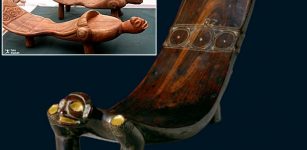 Curious Ritual Wooden ‘Duho’ Stool Of Ancient Taino People
Ancient Traditions And Customs | Sep 12, 2017
Curious Ritual Wooden ‘Duho’ Stool Of Ancient Taino People
Ancient Traditions And Customs | Sep 12, 2017 -
 Top 5 Terrors Of The World’s Seas, Rivers And Lakes
Featured Stories | Mar 27, 2021
Top 5 Terrors Of The World’s Seas, Rivers And Lakes
Featured Stories | Mar 27, 2021 -
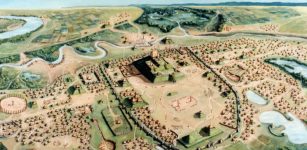 Story About Cahokia’s Lost Civilization Is Wrong – Archaeologist Says
Archaeology | Feb 14, 2020
Story About Cahokia’s Lost Civilization Is Wrong – Archaeologist Says
Archaeology | Feb 14, 2020 -
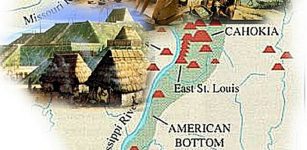 Unsolved Mysteries Of Cahokia – What Really Happened With The Large Metropolis?
Civilizations | Jan 15, 2015
Unsolved Mysteries Of Cahokia – What Really Happened With The Large Metropolis?
Civilizations | Jan 15, 2015 -
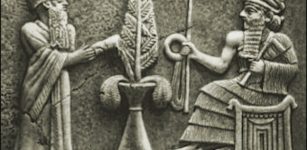 Ur-Nammu – Popular And Accomplished Ruler Of Sumer
Civilizations | Oct 31, 2016
Ur-Nammu – Popular And Accomplished Ruler Of Sumer
Civilizations | Oct 31, 2016 -
 Surprisingly Complex History Of Crocodiles – New Study
Evolution | Nov 23, 2023
Surprisingly Complex History Of Crocodiles – New Study
Evolution | Nov 23, 2023



